I am not sure what first drew me to Battle Harbour. I think it may have been the advertisement in Newfoundland’s “Lost and Found” travel brochure. Maybe it was the article with the word “Escape” in the title. Or maybe it was the promise of a place where “the distance is as much metaphorical as it is physical.”
I’ve always gravitated to historic places with a feel for authenticity….that promise realism of what life was like so long ago, yet also understate the conveniences and comforts of present day. I don’t really care for places like Williamsburg with its spiffy vibrant wallpaper and polished brass lamps, where period costumed actors try to make me believe they have been teleported through time and don’t know what my camera is. But give me a place where the inanimate objects have been well preserved to reflect a point in history in spite of their warts and wear, and I am all in.
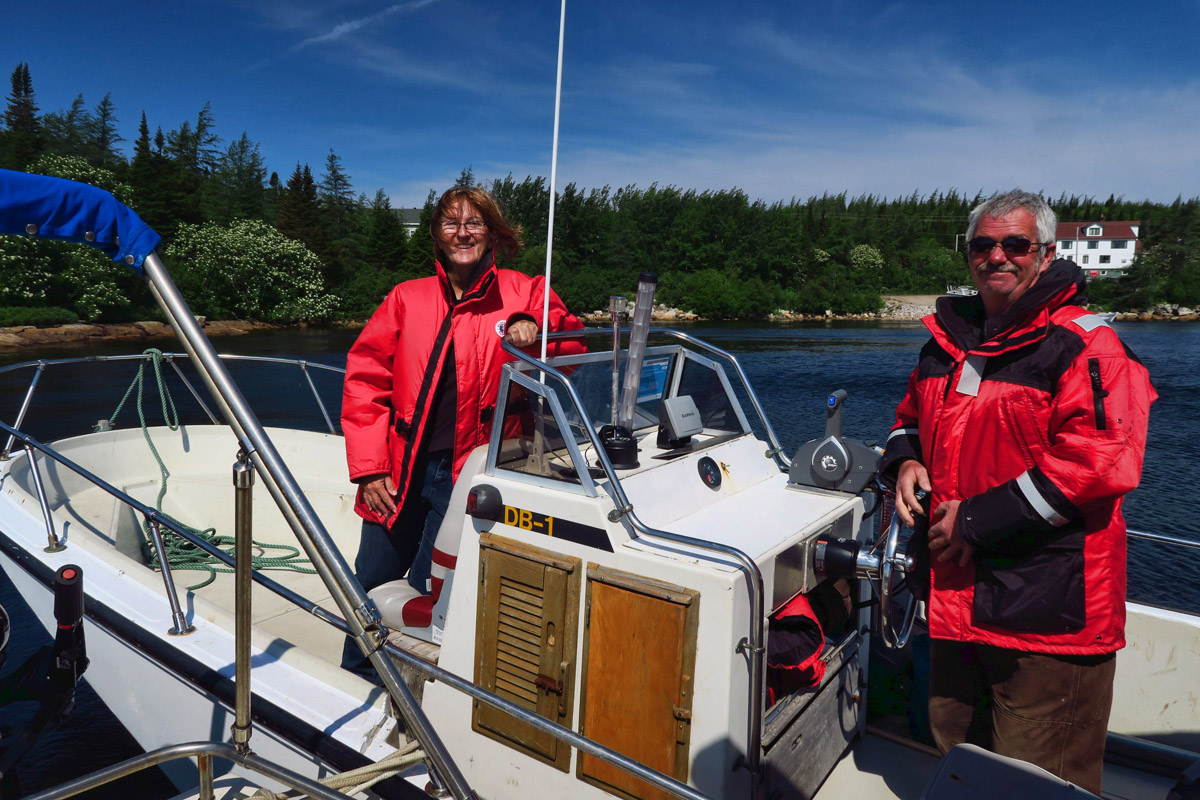
It’s a half hour boat ride to reach Battle Harbour. These “Michelin Man” jackets double as life jackets.
Day trips to Battle Harbour are offered, but I’m looking for something that offers a more intimate experience. As much as I love the Winnie, I also enjoy getting away for a night or two. As someone who has always been a lover of fine hotels and unique inns, I can only take that “I love having my own bed with me” so far. After a lifetime of travel for both pleasure and work, the idea of “packing a bag” still excites me. And the thought of staying over at this National Historic Site after all the “day trippers” have gone back on the last boat of the day is intriguing.
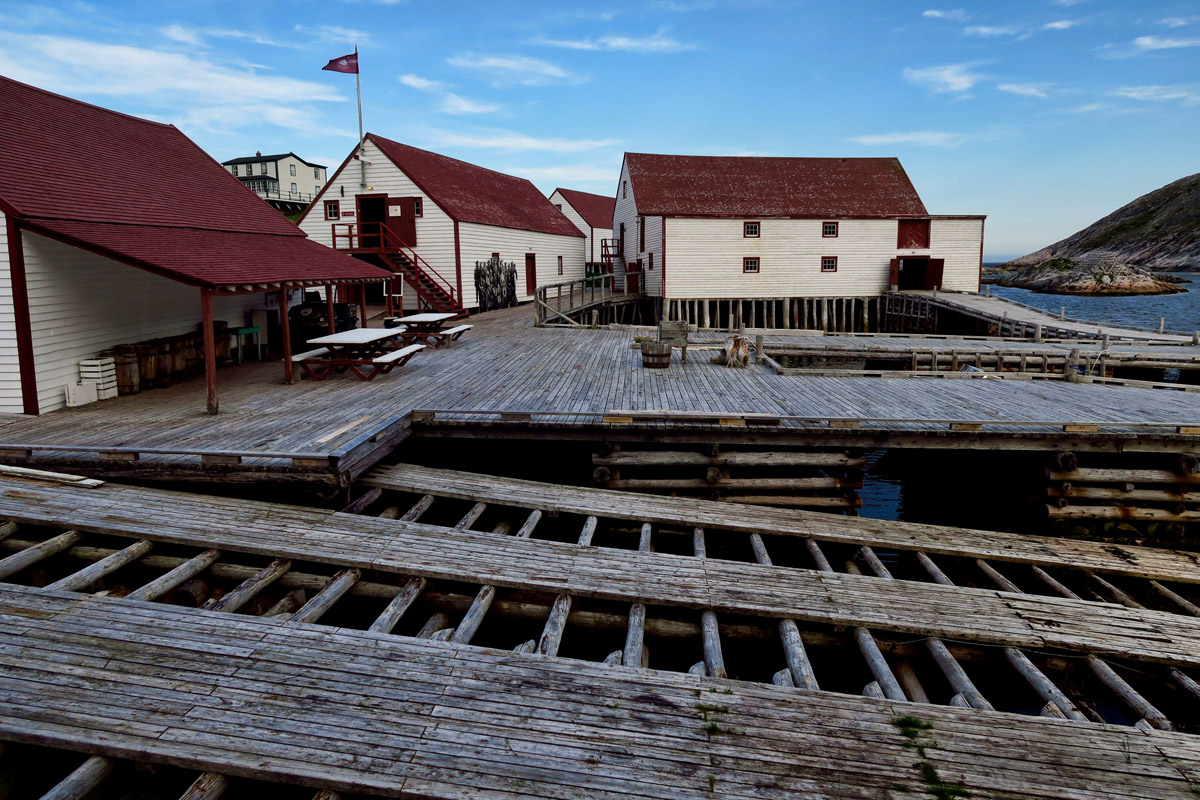
Even the ramps at the dock have been restored to look as they did during the fishing industry heyday.
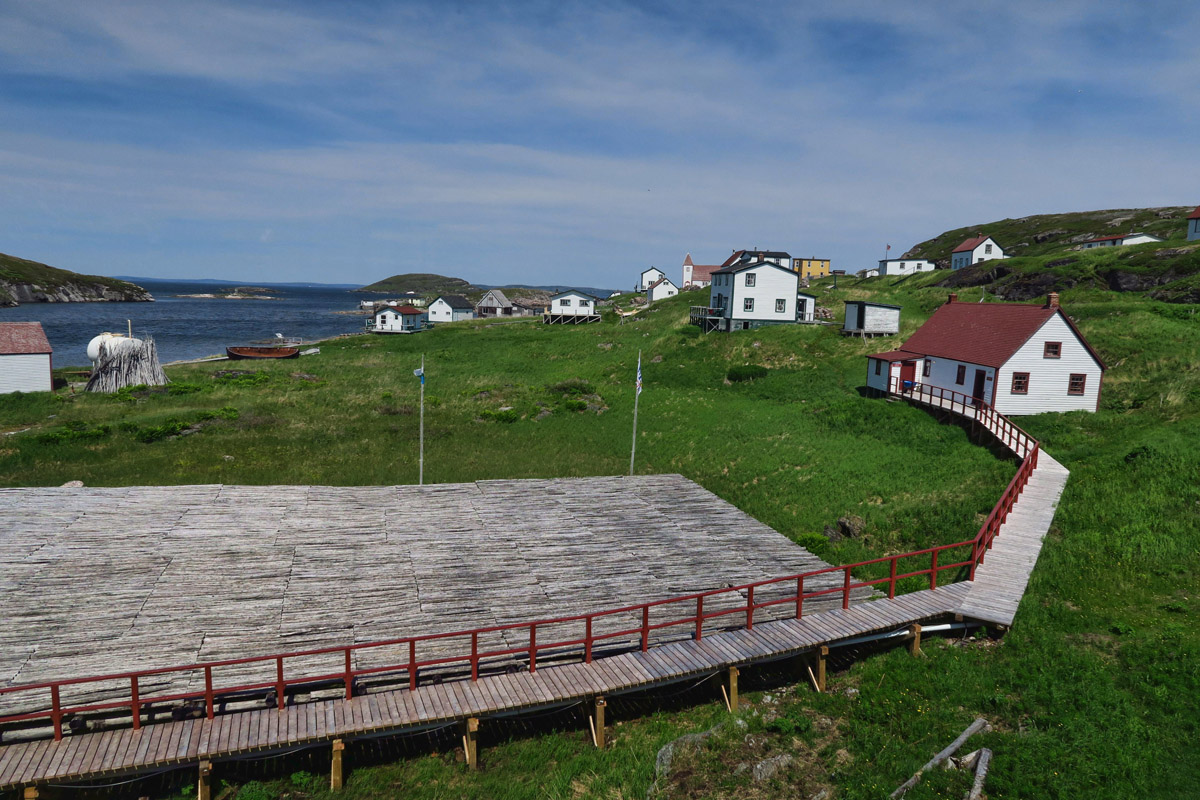
The large platform of logs is called a “flake,” and was where split, salted cod fish were lined head to tail to dry in the sun.
I check the website for their price list, only to realize it’s a bit more “understated luxury” than I can afford, in spite of my recent boondocking efforts. But as I am clicking through the website in the most unlikely of places, listed under “Cottages,” (which I typically associate with the top end accommodations,) I see listed the “Cook House / Bunk House” for only $50 a night. I’ll still need to pay a set fee for the ferry and meal plan, but the bunk house puts it more in range of what I am willing to spend for a splurge.
When I worked “nine to five and five to nine,” I used to buy into those marketing catch phrases that said “Feel the tensions of the day leave you the minute you step off the dock.” But I don’t have any tensions at the moment. I am having a fabulous time in Newfoundland and Labrador! So I don’t’ expect any relief by “getting away from it all.” No, this trip, I’m a curiosity seeker. But despite my convictions that I don’t need de-stressing, there’s something about a Boston Whaler boat ride speeding across the bay toward isolation that is both soothing and restorative to my soul.
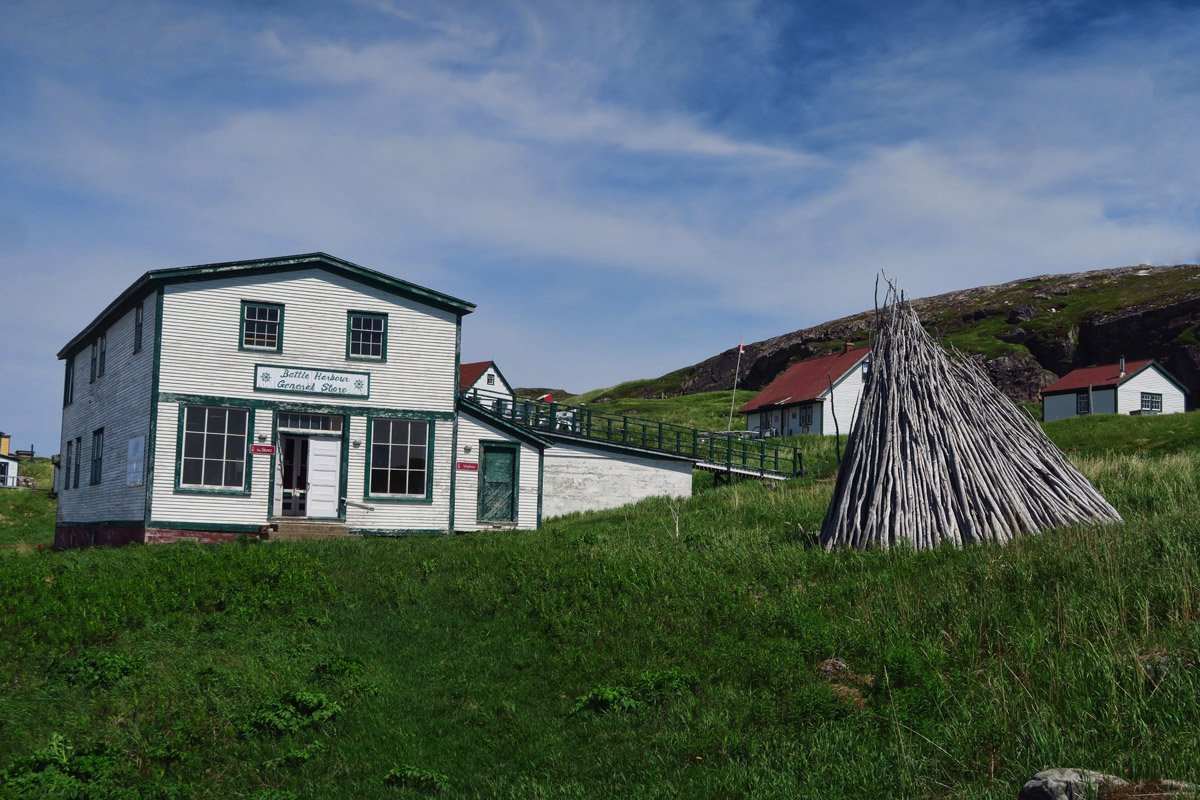
This is the General Store. There’s a nice bar disguised on top called the Loft, with big comfy leather chairs and great views…also, the island’s only wifi.

There are a lot of these life-sized cut-outs around made from photos of people who actually lived here in late 19th/early 20th century. Some of them look quite real.
Once considered the social and economic capital of Labrador, Battle Harbour was the pinnacle of the salt cod fishing industry. And no location is defined more by its natural resources than Newfoundland and Labrador are by their cod fishing industry. The fishing premises were established by John Slade and Company of Poole, England, circa 1775. Over the next century, it became an outpost, then a permanent community of fishers of cod, seal, and salmon.
All rooms and cottages on the property are restored original structures, save for one. Each served some purpose during settlement times. The Cookhouse Bunkhouse where I’ll be staying is where all the meals were prepared. Off the kitchen is a tiny room where the cook actually lived and cooked for the fishermen for 30 years. There is a commemorative plaque honoring Walter Piercy, 1912 – 1972, on the wall over the narrow twin bed.
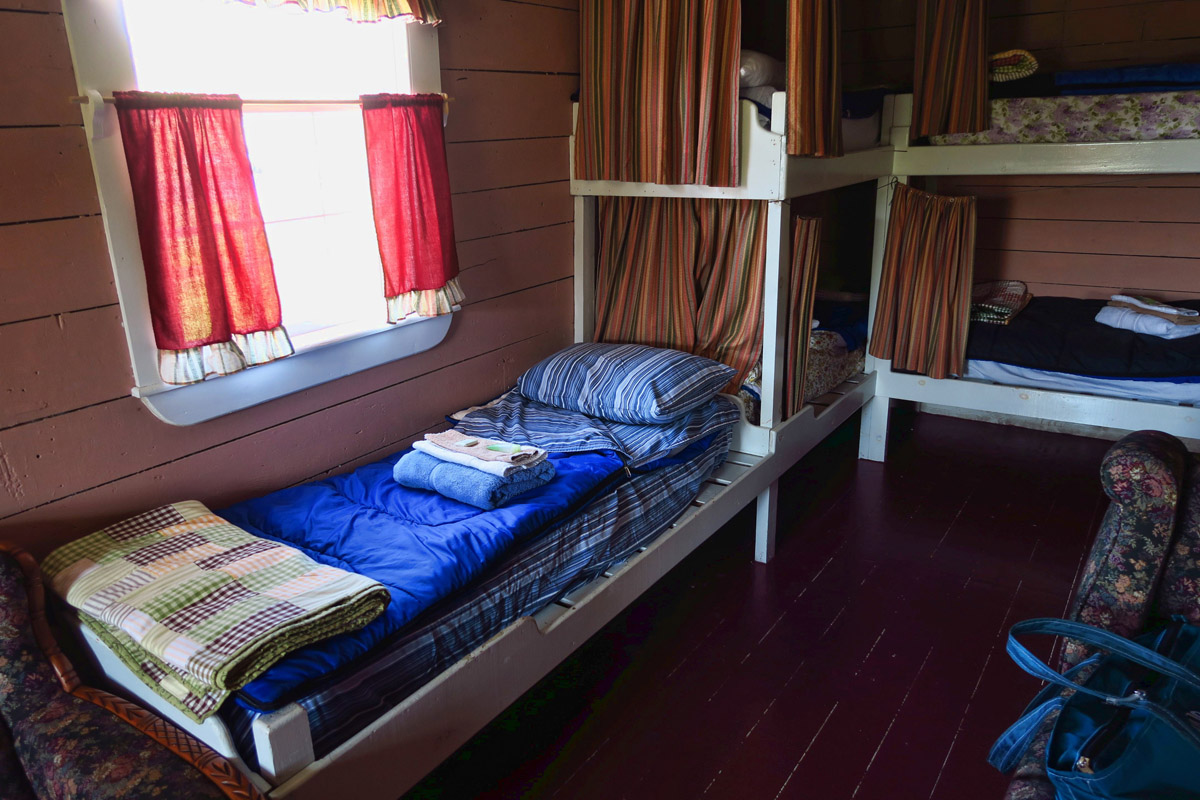
I look around the room to pick the best bunk, but then learn I’m the only one here! I choose the one by the window.
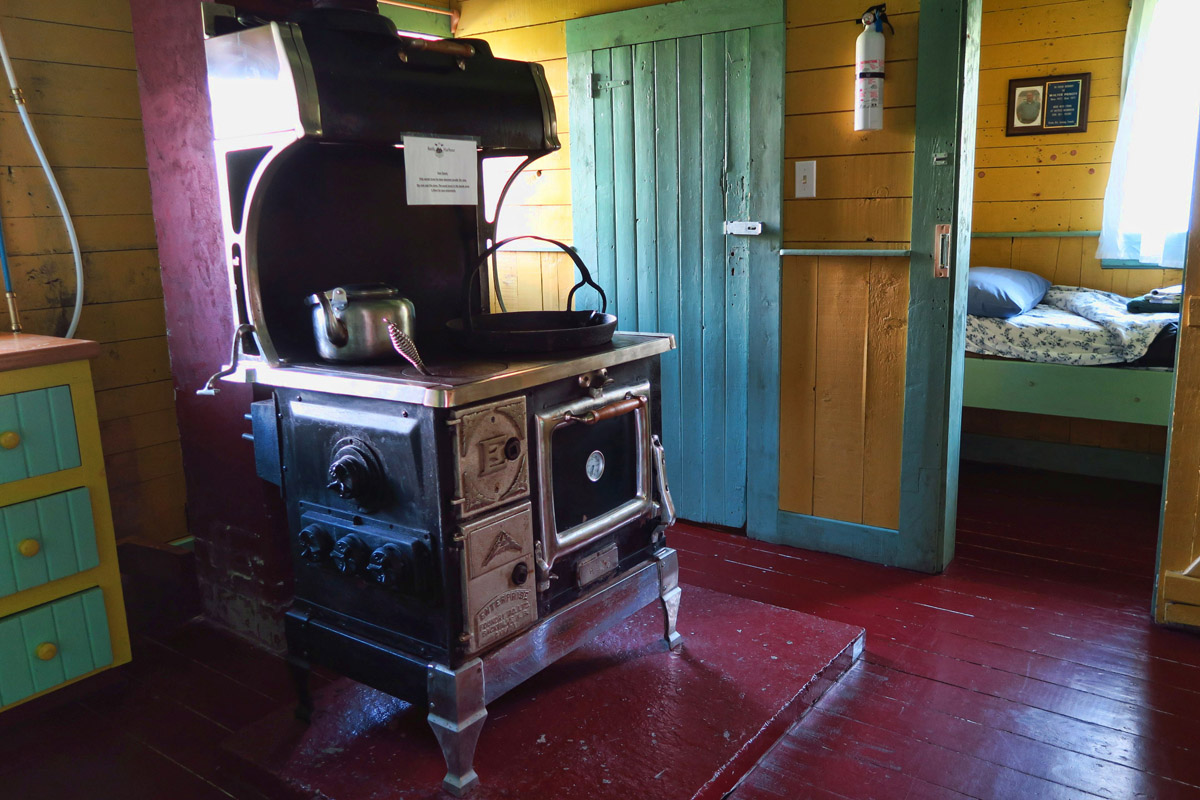
The cook, Walter Piercy lived and worked here for 30 years in this small room to the right. There is a plaque over the bed honoring his life, 1912 to 1972.
Upon arrival, I am escorted to my room by a woman who tends the General Store. As we enter, I expect it being a “bunkhouse” to be a bit in disarray, so I quickly scan for a “made bed” that offers the most privacy. There’s a nice warm fire crackling in the wood burning stove, and every bed is tidy. She tells me “Take yer pick, me Dear! You’ve got the entire bunkhouse to yerself tonight!” Knowing the “Newfie way,” she probably feels a wee bit sorry for me that I’ll be all alone, but she can’t know how this news of quiet solitude delights me!
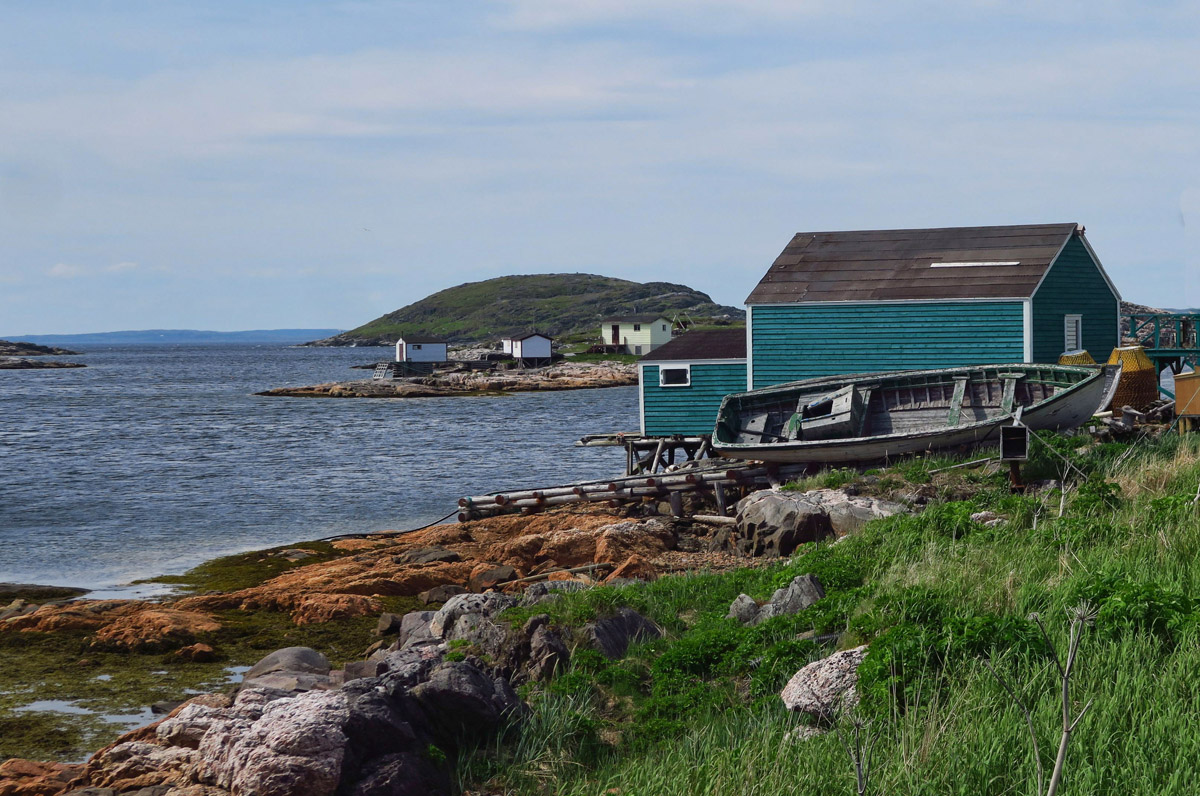
Most properties were donated to the Battle Harbour Trust who now maintains the island, but a few families kept their homes and use them seasonally.
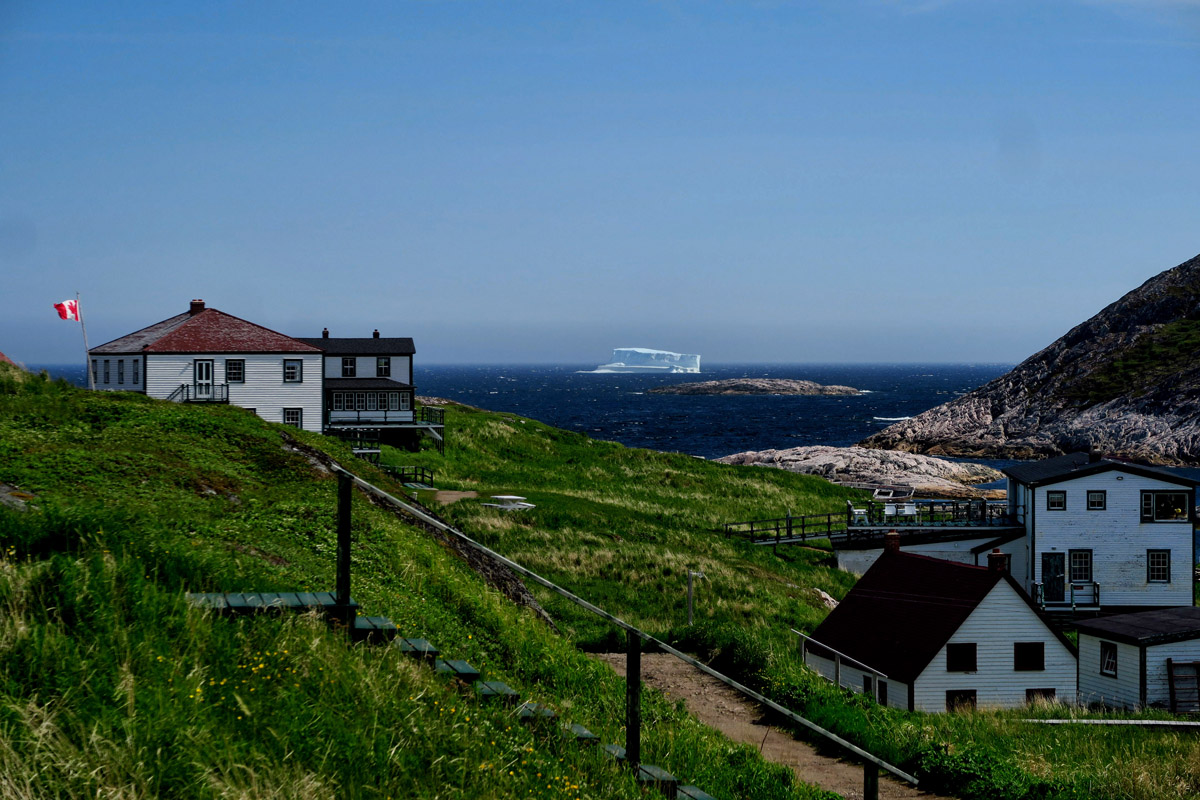
Buildings are all painted red and white, as the original buildings were covered with white paint from lyme and red paint from ocher.
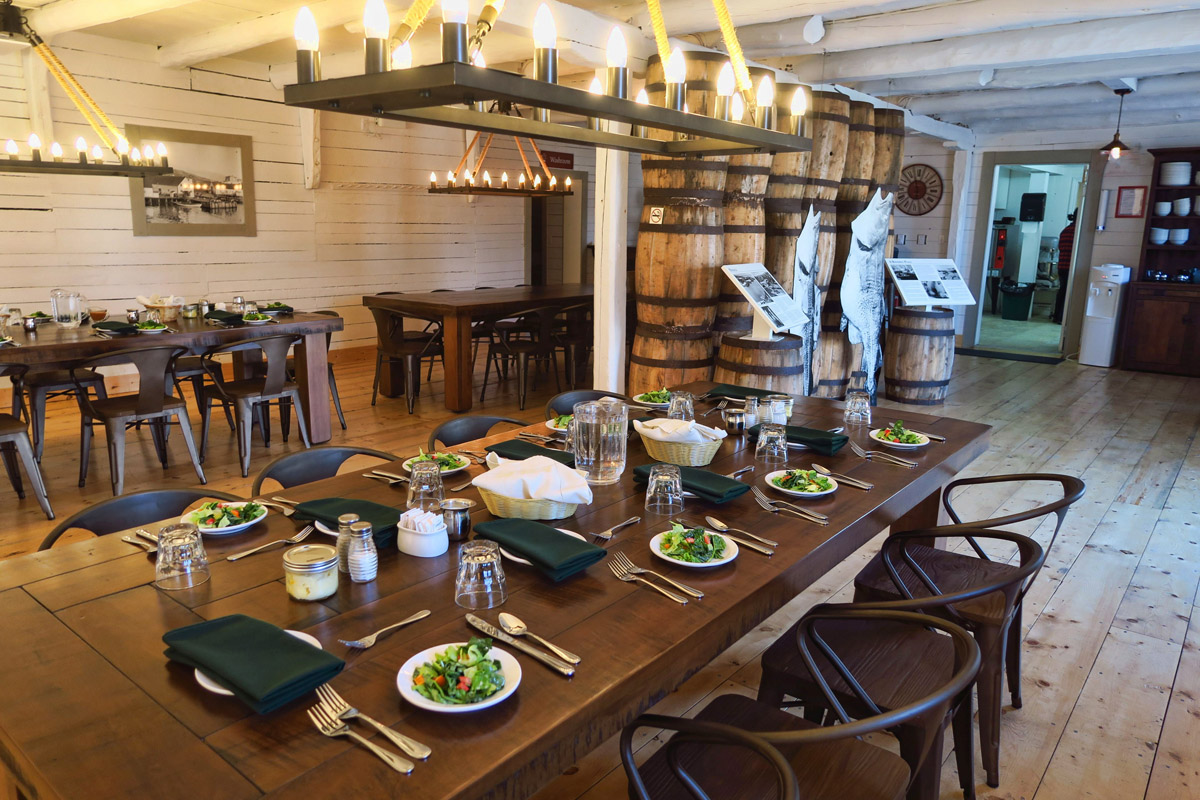
Meals are served family style, and food is quite tasty! It’s rare to see “green” on a plate in Newfoundland.
After a hearty lunch of Pea Soup accompanied by fresh made rolls, a Saturday Labrador tradition, we all assemble at the General Store for a tour of the property. But this is no casual walking tour. For three hours, we will be entertained by Janice, a volunteer on the property who grew up here. Her great-grandfather was one of the fishermen here in the early 20th century. Janice comes back each summer to volunteer in support of the National Historic Trust.

This is Janice, our tour leader. Like all Newfies, she is a great story-teller. (That’s a real dried salt cod she’s holding!)
We follow Janice like the Pied Piper as she takes us from building to building, telling us about her days as a child, the only girl among four brothers, who loved being involved in the fishing process. From reeling in the cod traps to her favorite “cut-throat” section of the fishing “stage,” where cod fish are gutted, salted, and prepared for drying, her stories bring the process to life. She describes a fishing stage in great detail as elevated platform over the water with working stations around the table at which fish are landed and processed for salting and drying. Four people would stand around the table and in assembly-line fashion, the first would “cut throat” to remove the entrails, the second would split and clean the gutted fish, removing the backbone. The third would salt the fish, and the fourth would pack it into a box.
At each room in the tour, Janice has a personal story to share, whether the making of barrels, the repairing of nets, or the most interesting, the Salt Store. Her childhood love of the cod fishing industry is palpable as she describes the salty brine visible on the walls, oily texture of the original plank wooden floors, and the stinky smell of cod liver oil.
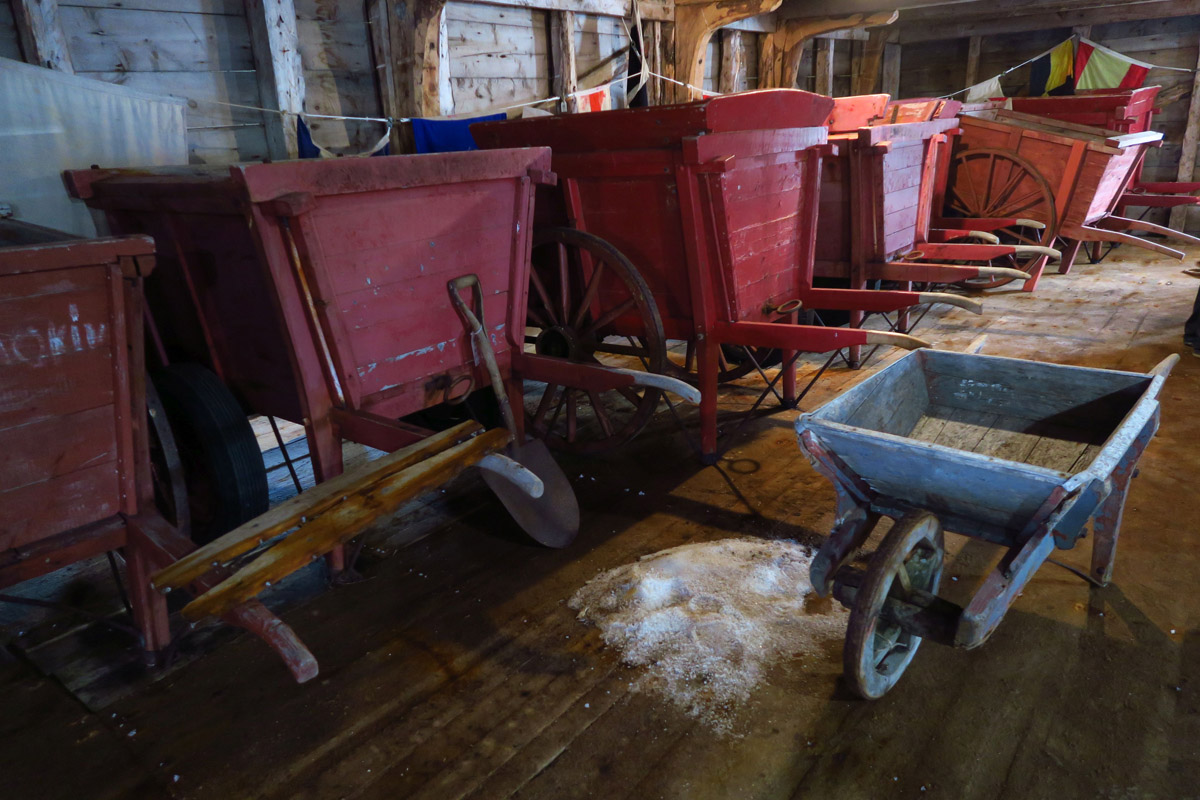
Here, we are in the “Salt Store.” These giant carts were used to transport salt to the “stages” where split, cleaned cod fish were salted to prepare for drying.
But once we reach the “Seal Store,” the conversation takes an uncomfortable turn, as Janice is seemingly apologetic as she describes the process of seal harvesting; the skinning of the carcasses and oil extraction process, whereby one adult harp seal would yield on average six gallons of oil. One of the tour participants speaks up in defense of the industry, saying he is a seal hunter. He lays out the other side of the seal hunting controversy, blaming Green Peace for distorting the facts and calling them “baby seals.” He goes on to explain how the seal population is out of balance, as they would be an excellent meat source were it not for Green Peace. He suggests the population needs culling, as they consume 35 lbs of fish each day. Still, Janice lowers her tone to a near whisper as she apologetically describes the treat of “Flipper Dinner” growing up, made from the arm of a seal, similar to a Sunday Roast.
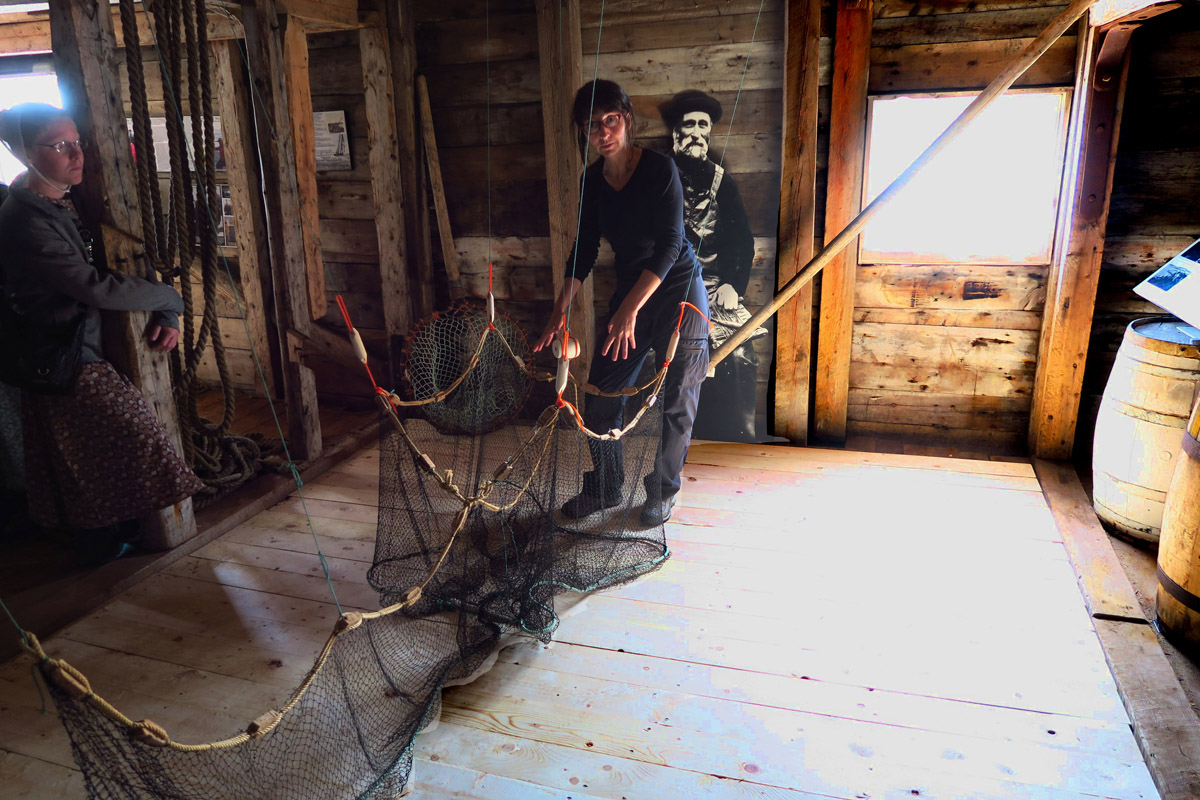
Here, Janice demonstrates how a cod trap works. This is a miniature replica, as traps can be as big as this room. Cod migrate, but reach the net that blocks their path, so they turn to the right and end up in the room with no escape.
We are led through the lineage of the cod fishing industry, from simple “cod jigging” with a hook and line from a small boat, to cod traps, to the murderous gill nets, all the way up to industrial offshore fishing by the Russians and Chinese in what is ostensibly a floating fish processing plant complete with radar, sonar, and cold storage and freezer units, all leading up to the eventual collapse of the cod industry. Their non-selective approach of scraping the bottom of the sea impacted not only the cod, but the entire marine life food chain. Fished out. Bring on the cod moratorium of 1992.
The damage to the coastal ecosystem appears to be irreversible with fish populations still yet to rebound after 20 years to even within 10% of what they were. So the cod fishing industry remains closed for today to commercial harvesting.
Battle Harbour also played a memorable role in the race for the North Pole in 1909, as Admiral Richard Peary used the Marconi Station in Battle Harbour to announce his conquest of having reached the North Pole to the headquarters of New York Times. Over 30 Canadian and US newspapermen traveled to Battle Harbour to record Peary’s news conferences in the loft of Salt Store.
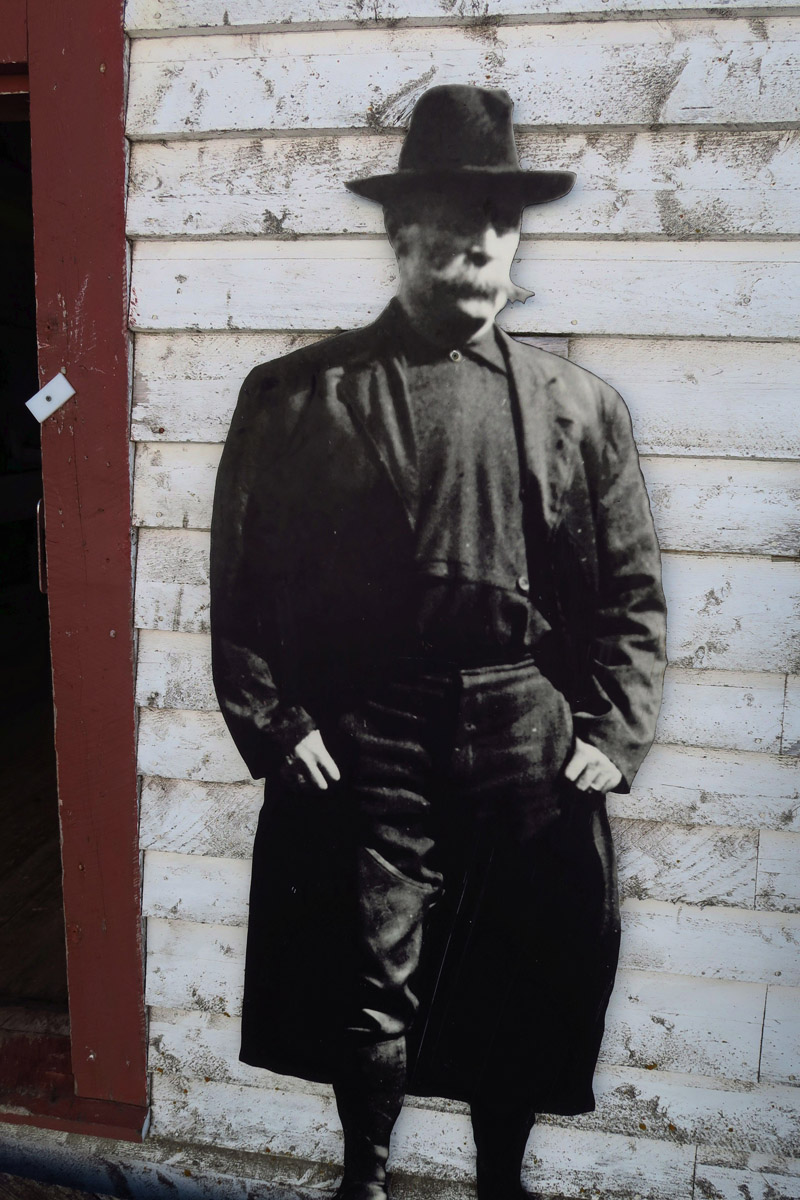
A life-sized cut out of Rear Admiral Robert Peary, photographed here in Battle Harbour after his reported acquisition of the North Pole.
Peary’s race to the pole was met with controversy, however, as another explorer, Frederick Cook claimed to have reached the pole months prior. But he had no proof to substantiate his claim, so Peary still holds the title for having attained the Pole by the National Geographic Society despite them having done any due diligence as proof. Questionable was his claim to have traveled the final 135 miles across the Arctic ice fields in only five days using only dead reckoning, particularly after having told his chief navigator Captain Bartlett, a Newfie, to wait behind.
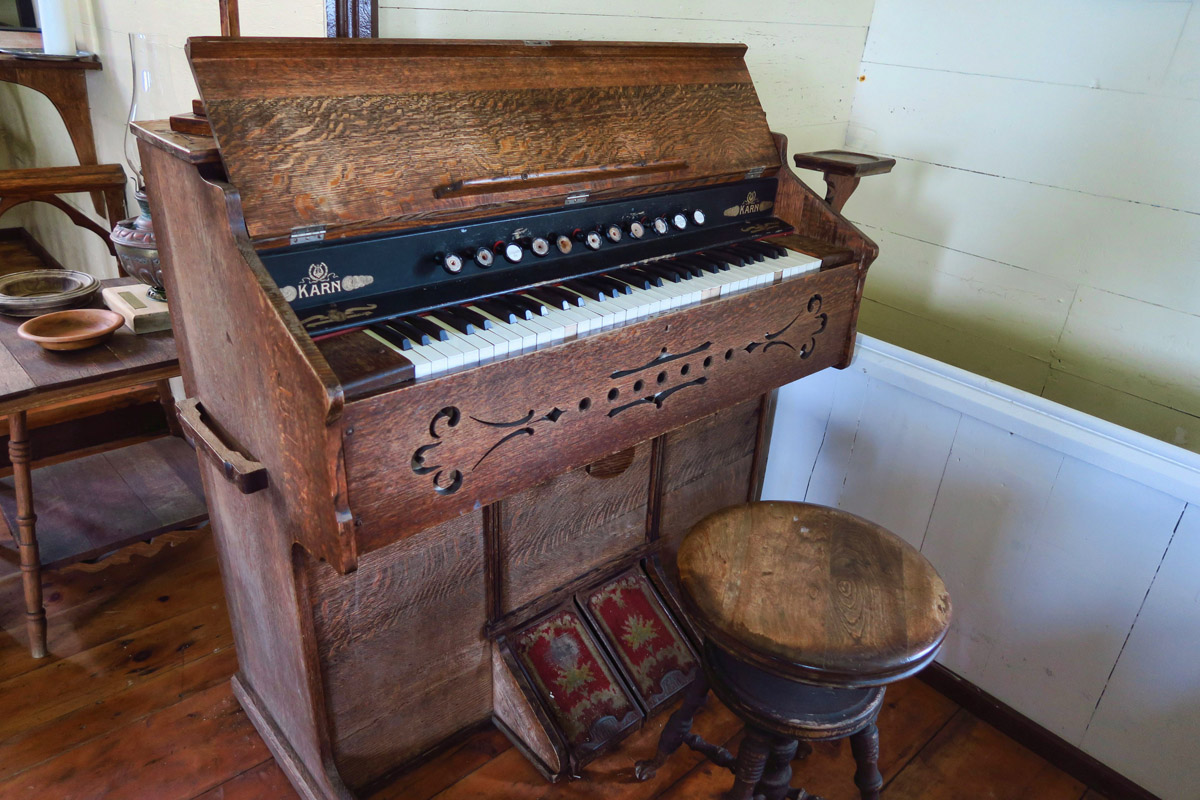
Instead of putting a “Do Not Touch” sign on the old organ, Janice asks if anyone would like to come up and play.
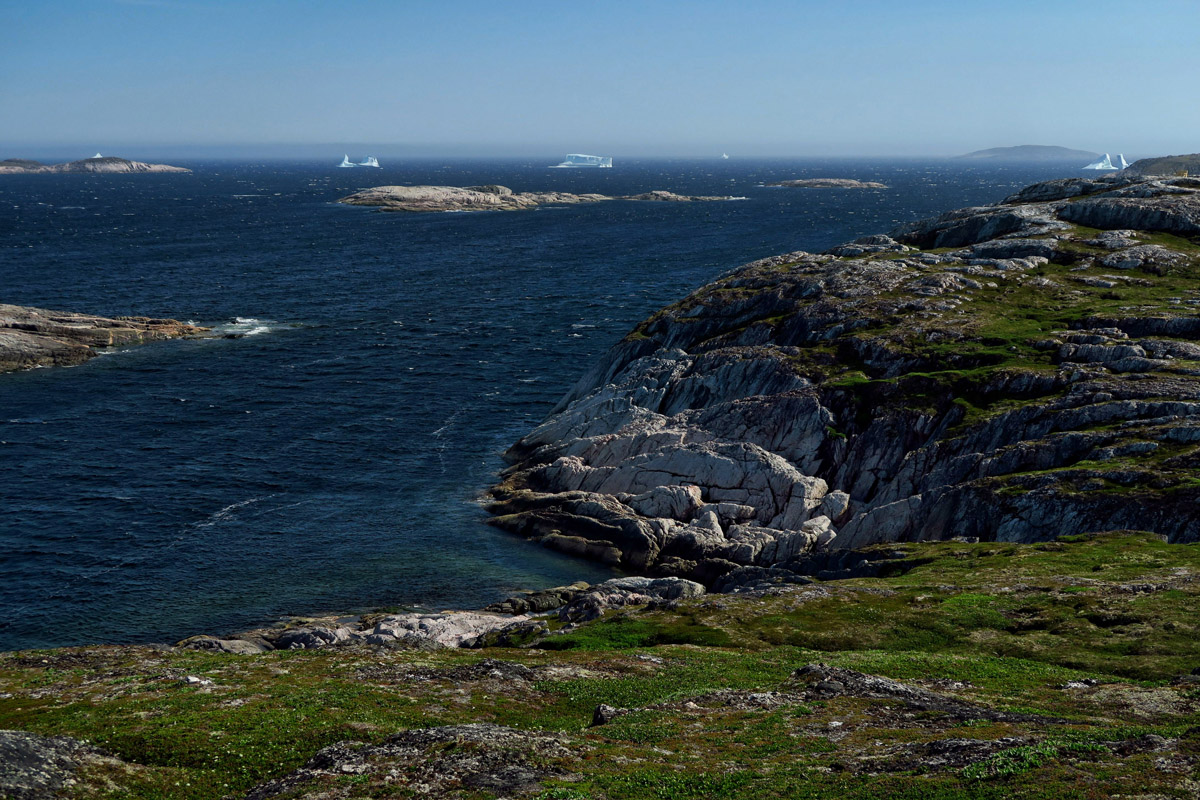
After the tour, Janice directs us to the hiking trail that goes up over the hill. Although I can’t get them all in the photo, I can see eight icebergs from this point.
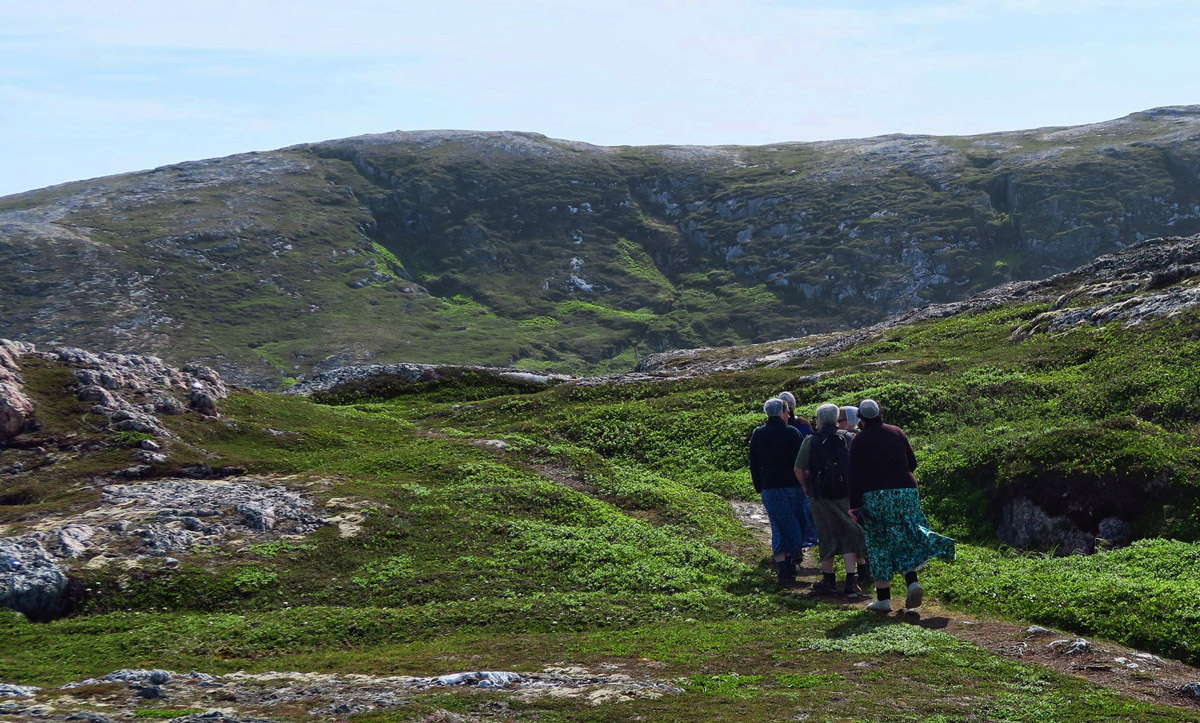
These women appear to be wearing period costumes, but they are actually Mennonite tourists over on a day trip to tour the island.
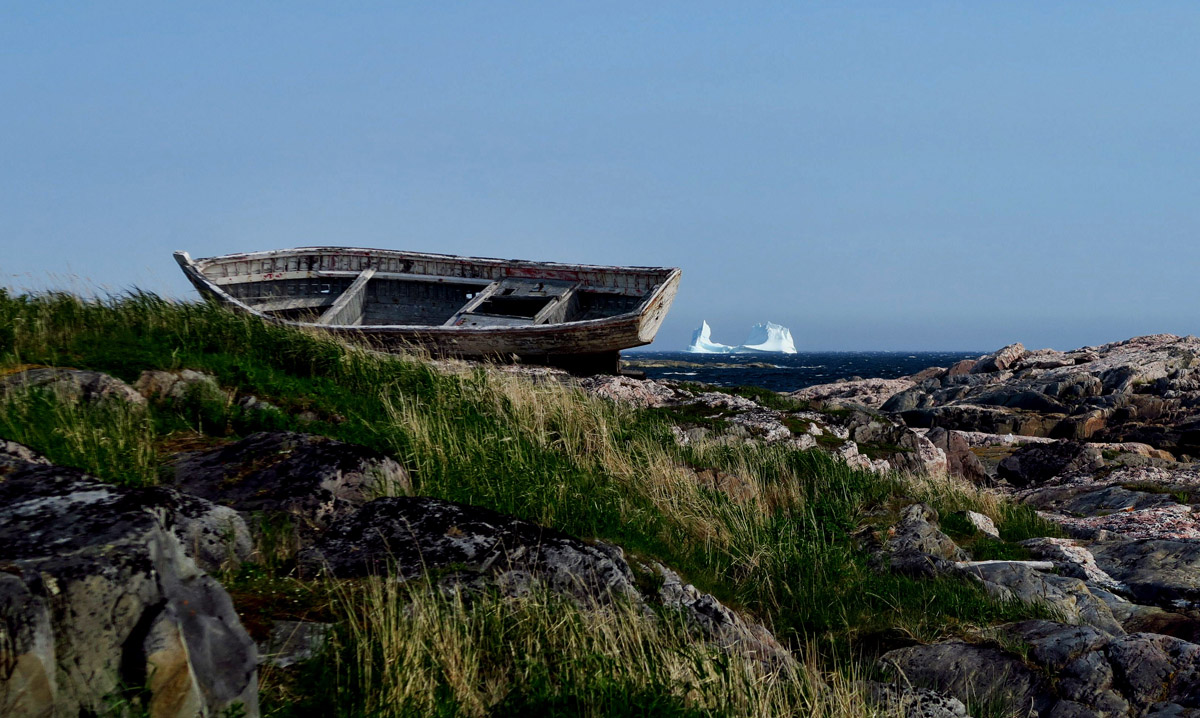
This was my favorite spot on Battle Harbour. I must have come down here five times watching the light change.
Battle Harbour is being lovingly tended by the Battle Harbour Historic Trust, based on sponsorship and charitable contributions. It is indeed a very special, unique place that enables one to get away from it all, whether they need it or not….“where distance is measured in years, not miles.”
I only opted to stay one night on Battle Harbour, as I feared there wouldn’t be enough to do. However, as the previous person entered in the guestbook, I left there wishing for “just one more day…”

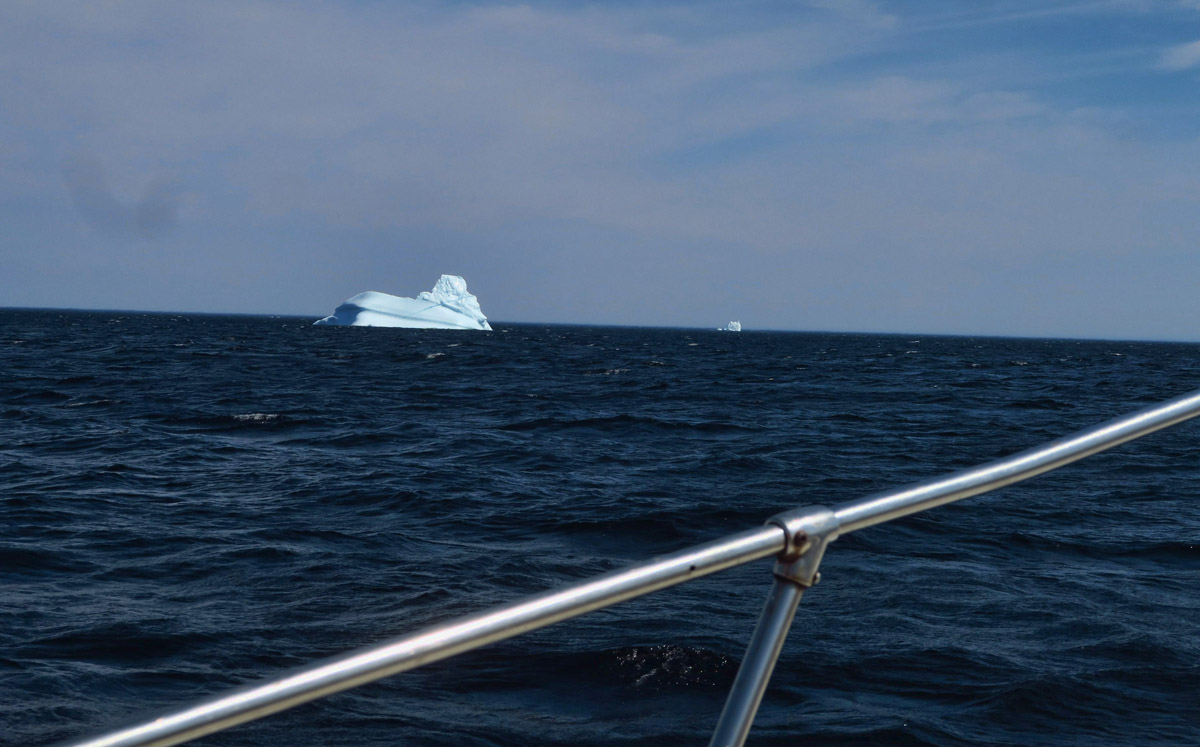
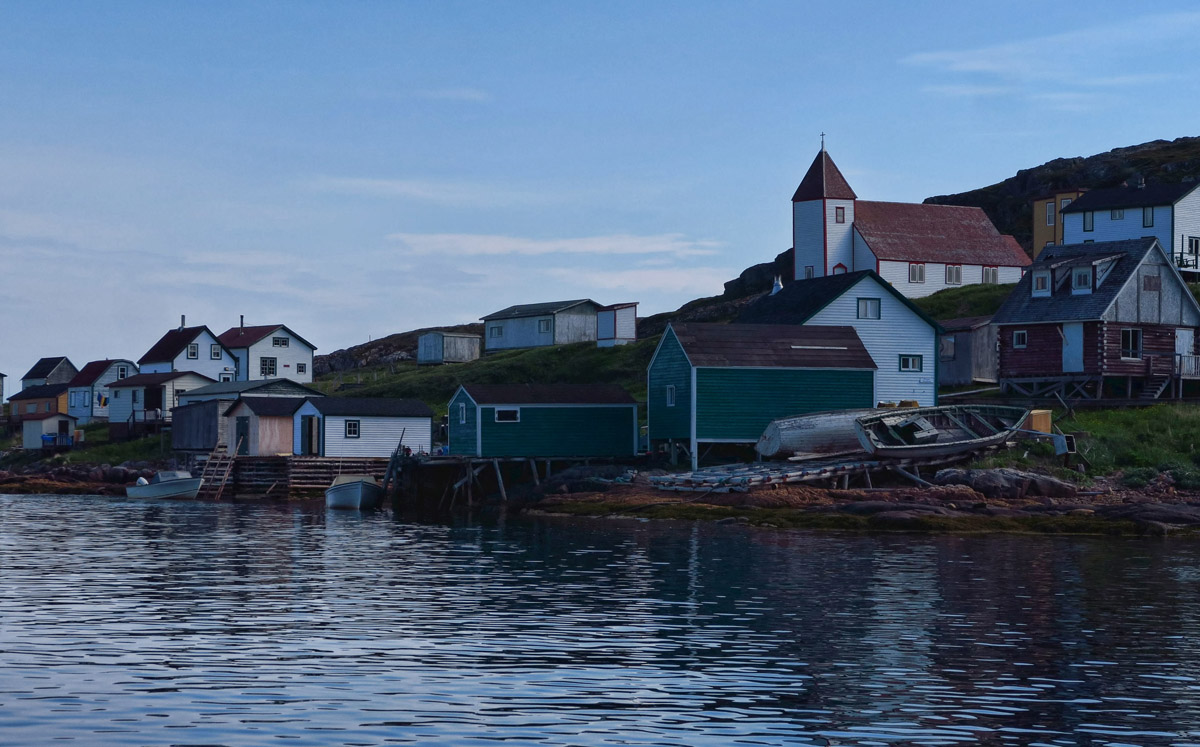
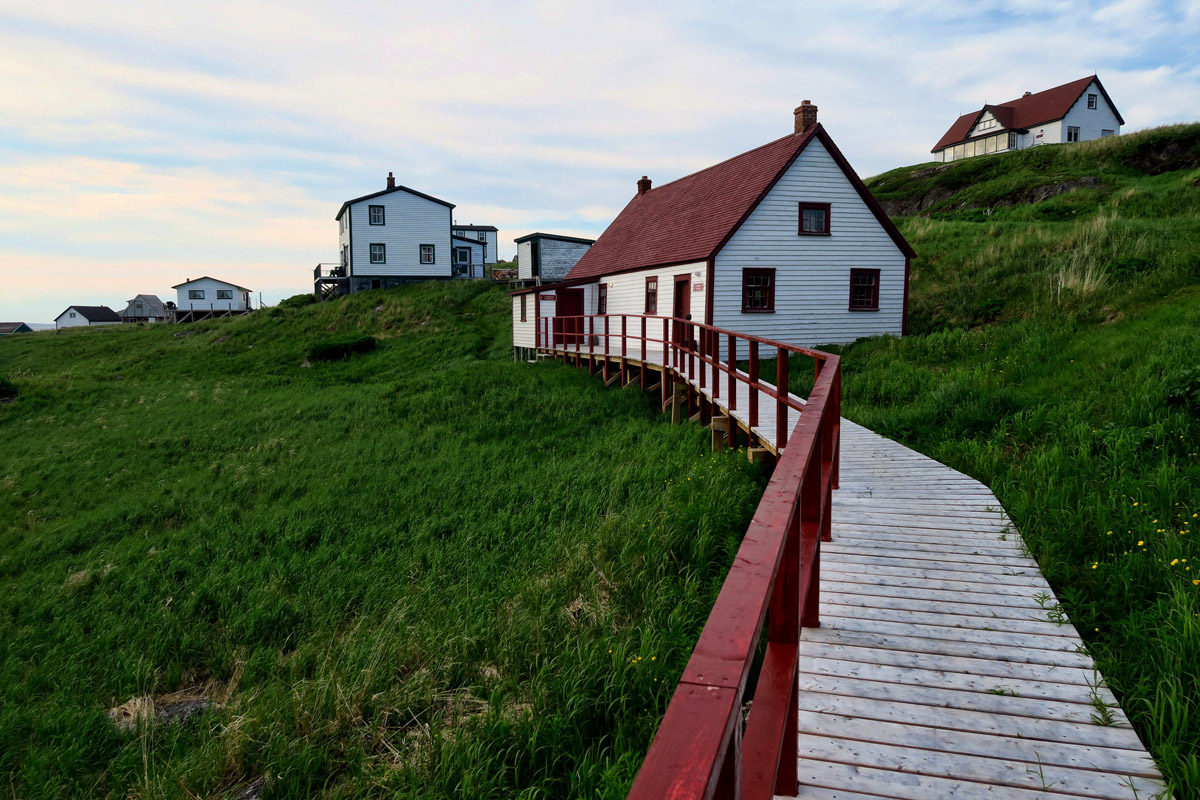


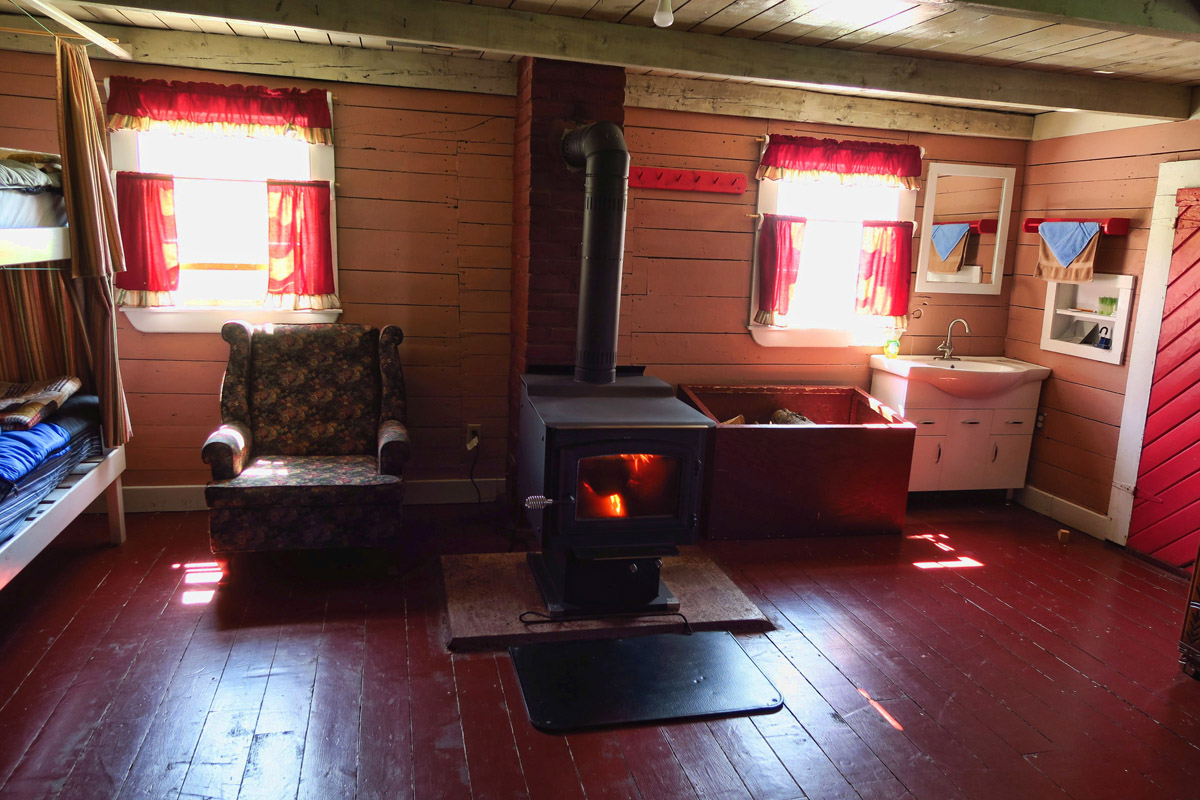
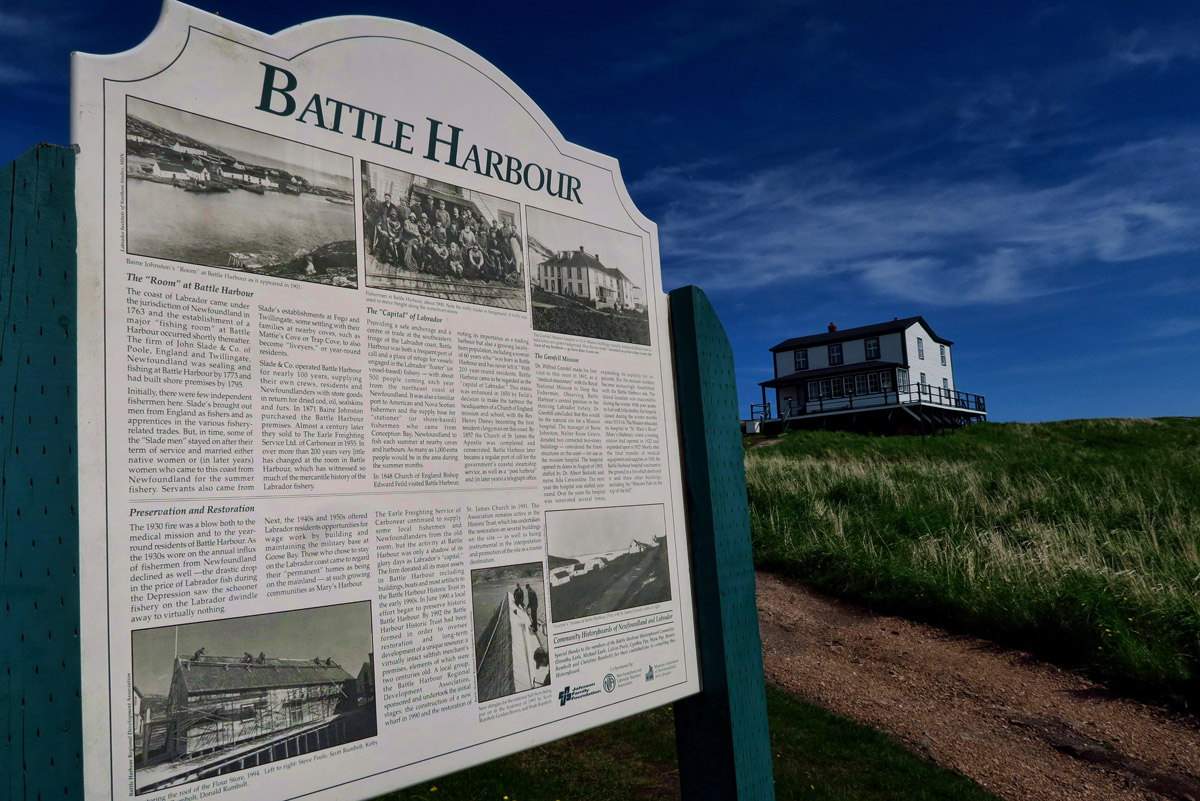
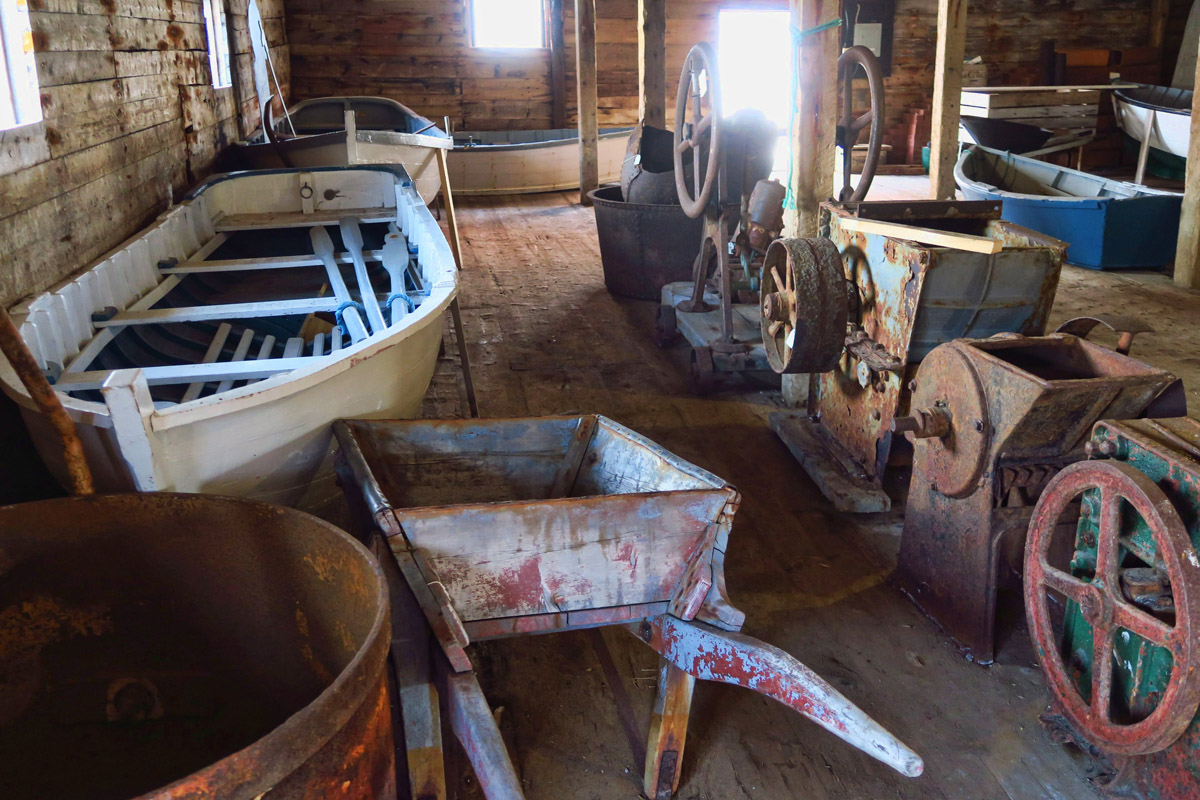
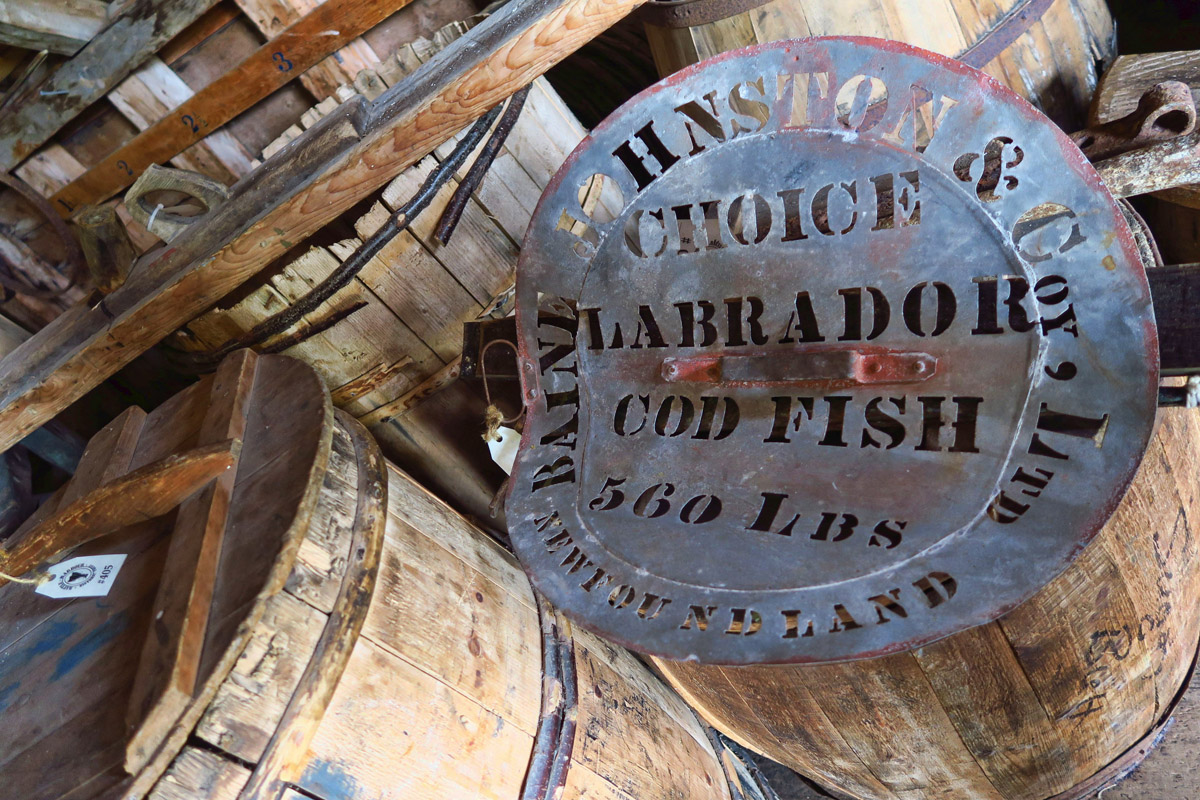
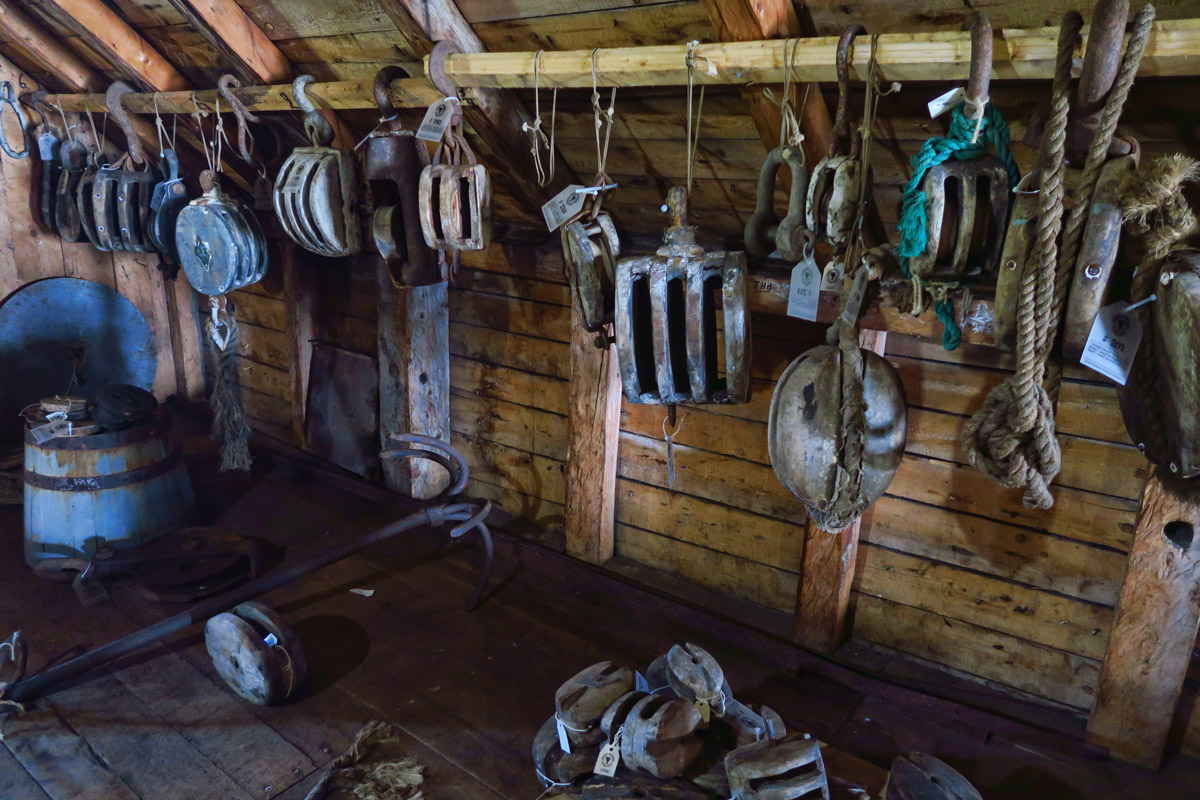
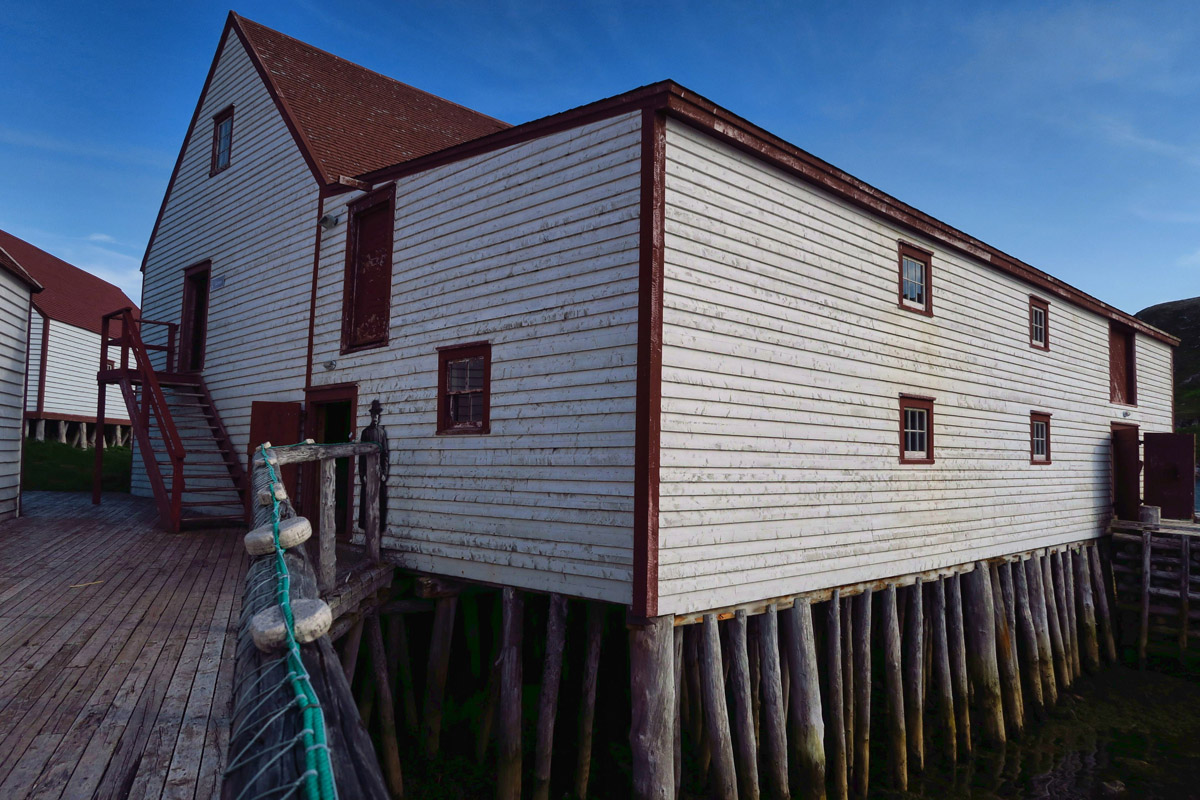
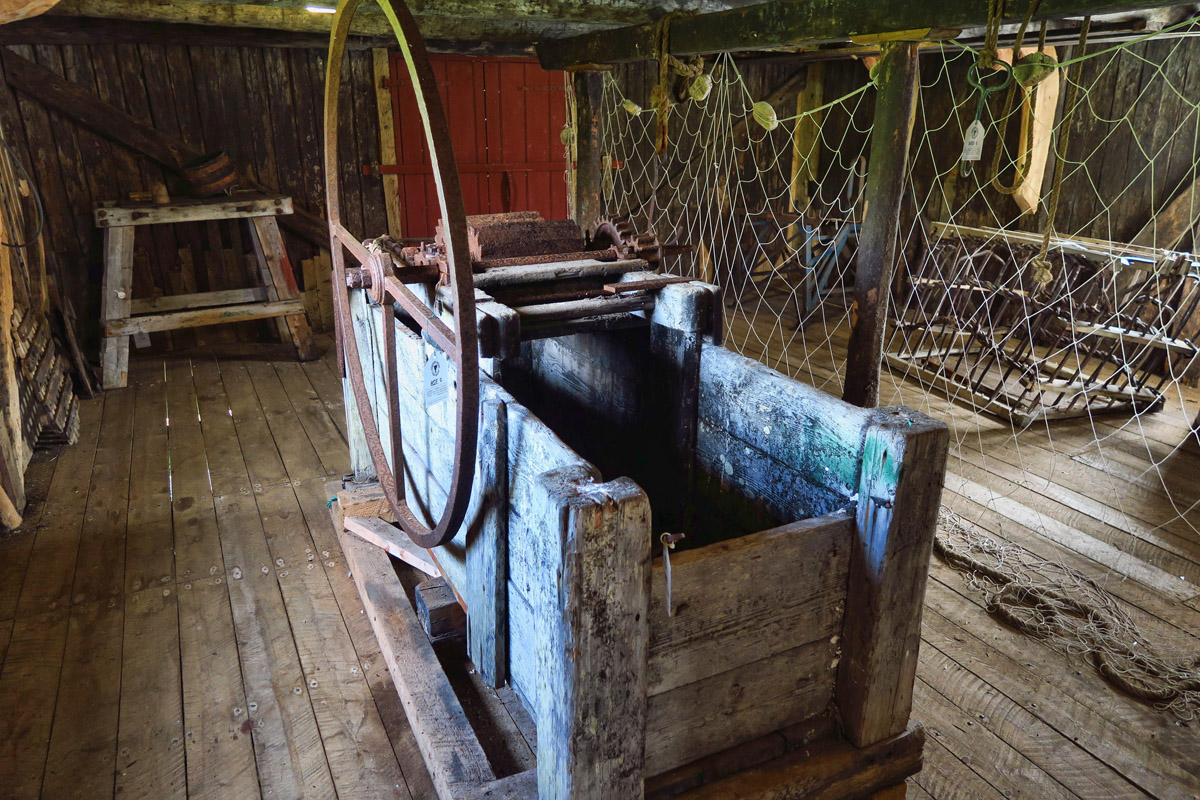

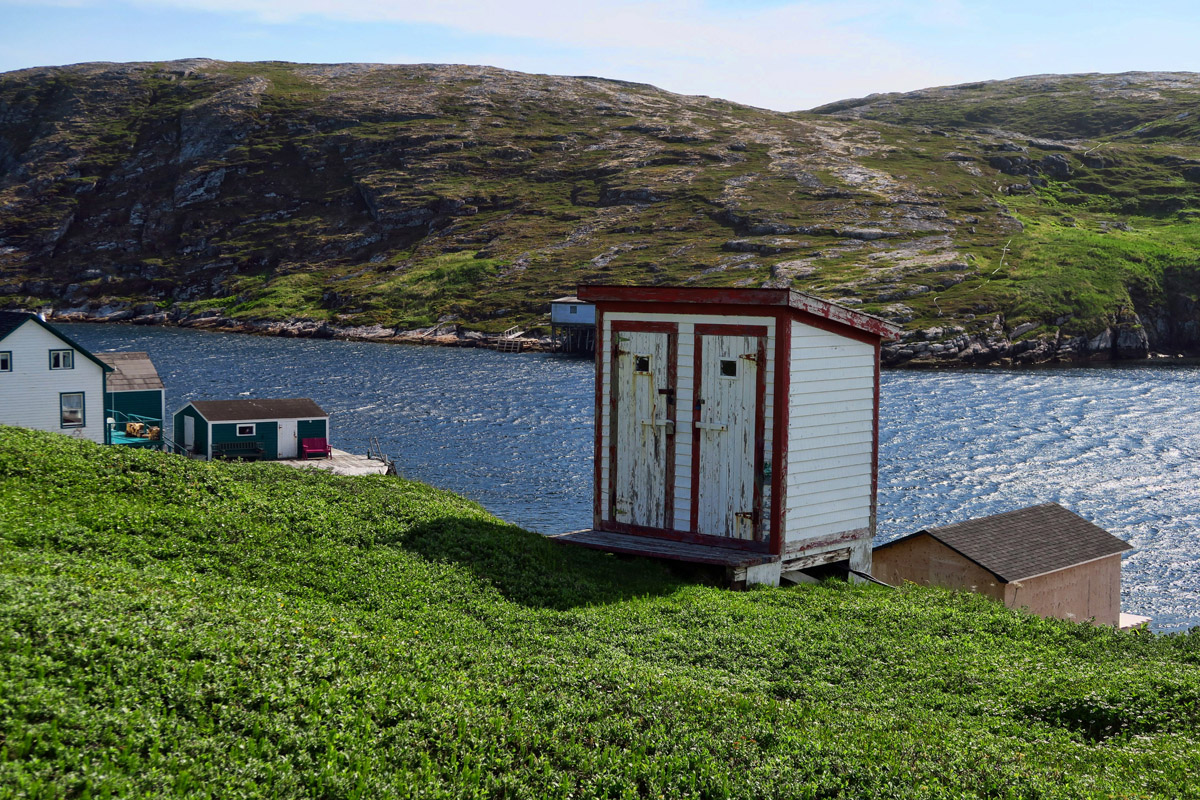
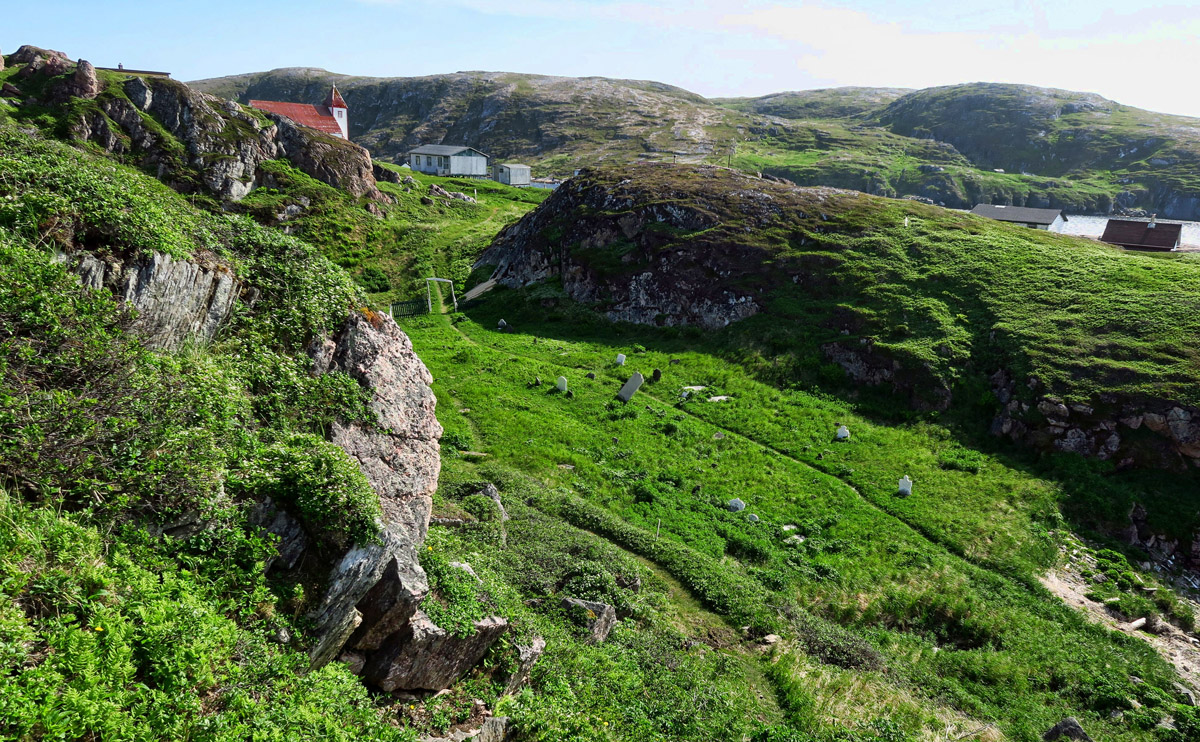
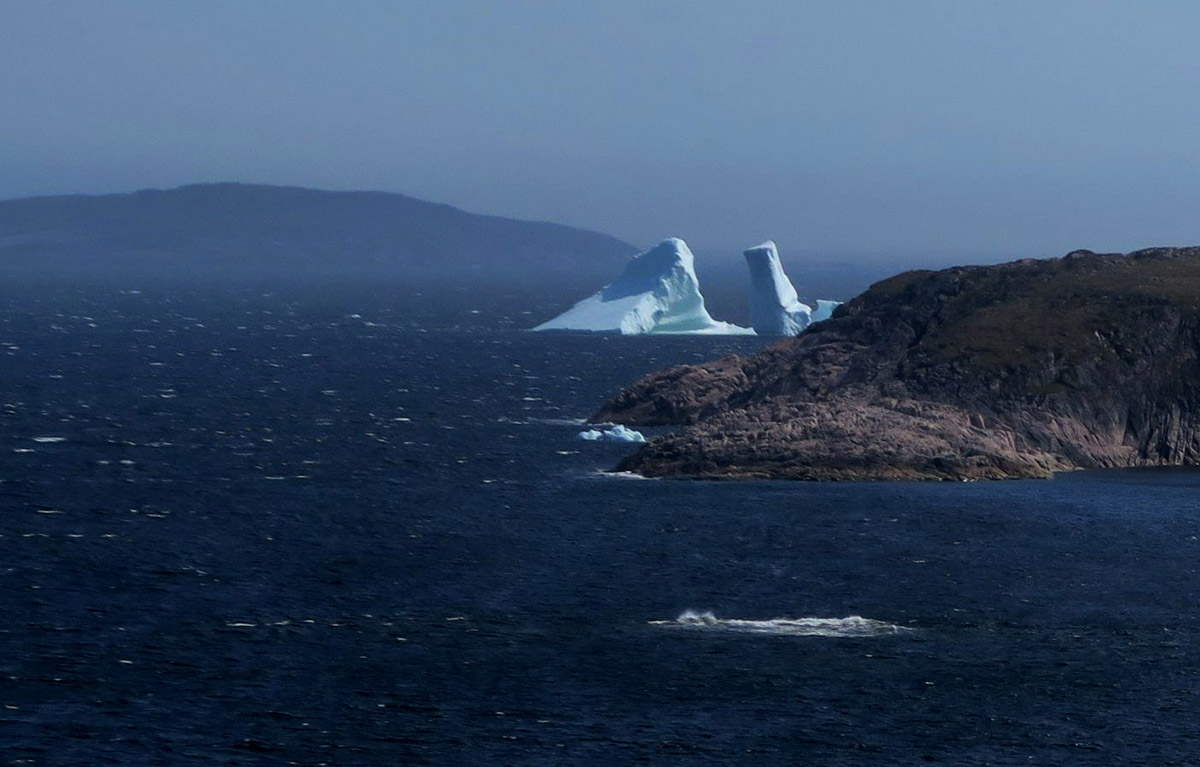
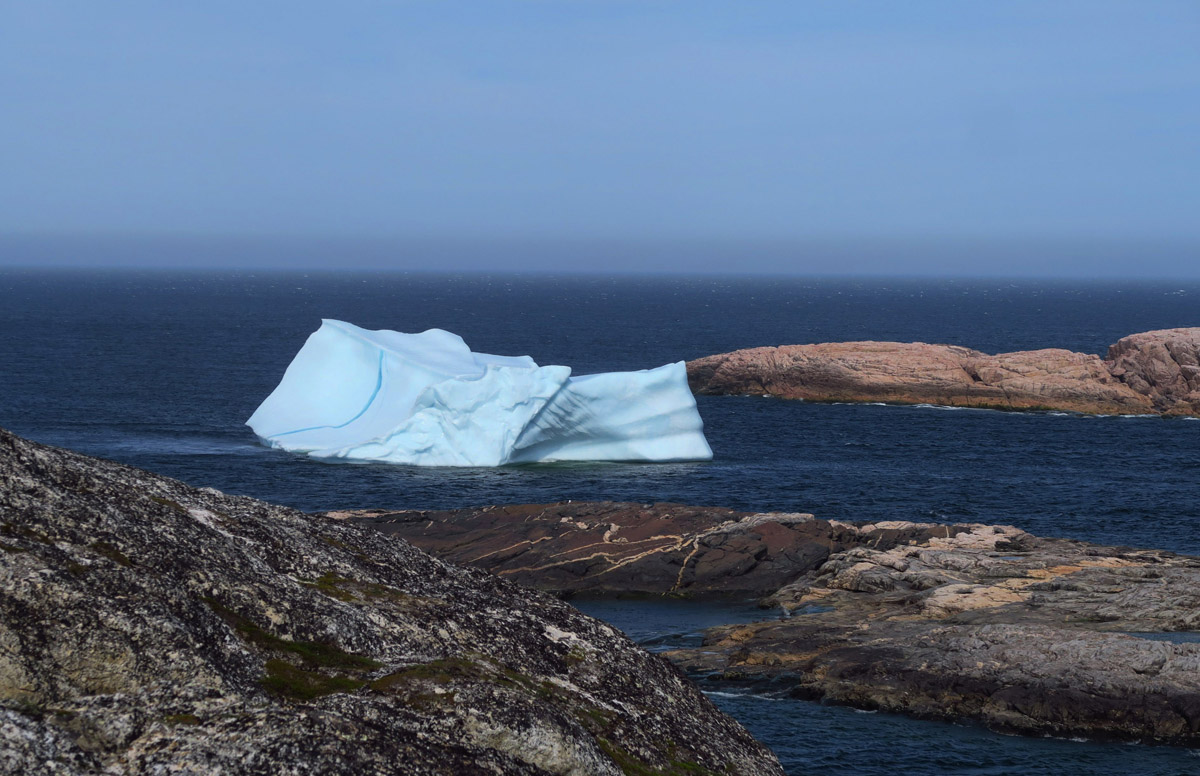

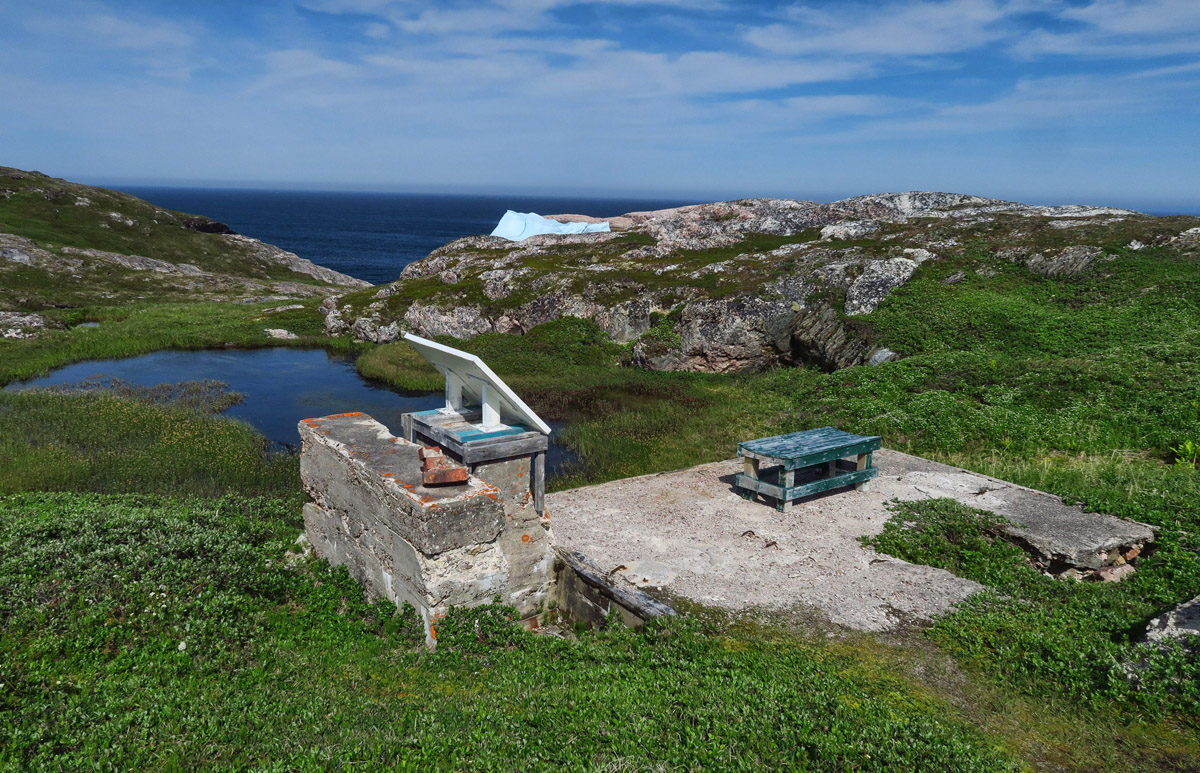

What a wonderful town to visit! Glad to see the predicted hordes of tourists for Canada 150! did not deter you from visiting the Maritimes. Are you going to continue on to Cartwright? That looks to be Land’s End and a grand adventure.
It looks very pretty there. I had to skip over the part about the fishing industry 🙂
I can’t read that part either 🙁 I was planning a trip to Battle Harbor, now I’m not so sure. I don’t want to do that tour about the fishing or sealing industry, and I don’t want to stop at Red Bay to learn about whaling :((
I am so glad you have been captivated by our Canadian history. I love how you ferret out these special and personal tours. This one appears to have been extra special.
What a lovely immersion into a special place.
Excellent post! Now, Marti and I wish we had endured that last 20 miles of gravel road to get up there. Really glad that you did.
Fabulous!
(I now know you would have enjoyed Louisbourg, NS)
This is flat-out wonderful
Marci
What a great stop! So glad you went to share all the new information with us! While the fishing industry tour would be tough for me to hear, I do enjoy learning how things are done. Lovely photos!! Lots and lots of iceberg to help satisfy your need:)
Thank you for this enlightening post…as I sit in my comfy armchair to read about your delightful discoveries I sometimes long for a more adventurous life. Yet the sharing of your travelogue with those of us who are generally content with being “put” helps to quell unfulfilled ragged edges of wanderlust. I thank you for that.
That was an interesting comment by the seal hunter. Talk about a charged topic! Seattle had a problem with sea lions ambushing the returning salmon, but since the Marine Animal Protection laws, nothing could be done about it. As always, beautiful photos and commentary.
The icebergs were great against the blue skies. The sleeping arrangements were just right.
Hi Suzanne, So glad to have found your blog. Wonderful imagery. John and I are leaving tomorrow, August 14th from Beacon, NY to Newfoundland. So excited. Going to print out your blog and the Kirkpatrick’s for guidance. I have a feeling we are going to need our jackets! Ferry from Sydney on the 28th.
I am looking for a copy of this photo i think my great grand father is on it. can some email it to christina-floyd@outlook.com
rhttp://taketothehighway.com/wp-content/uploads/2017/07/IMG_8608.jpg